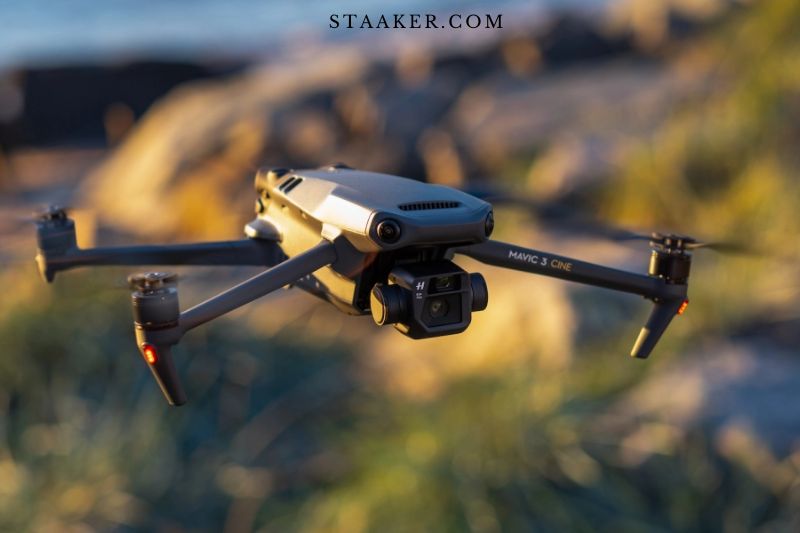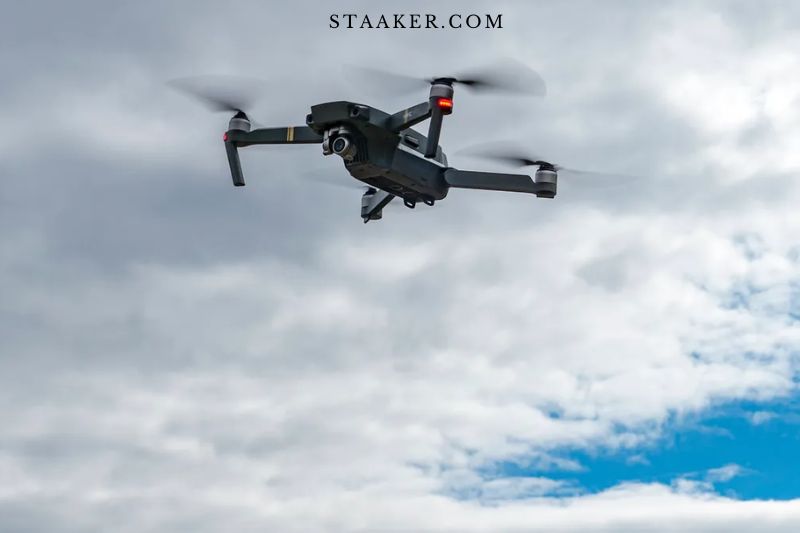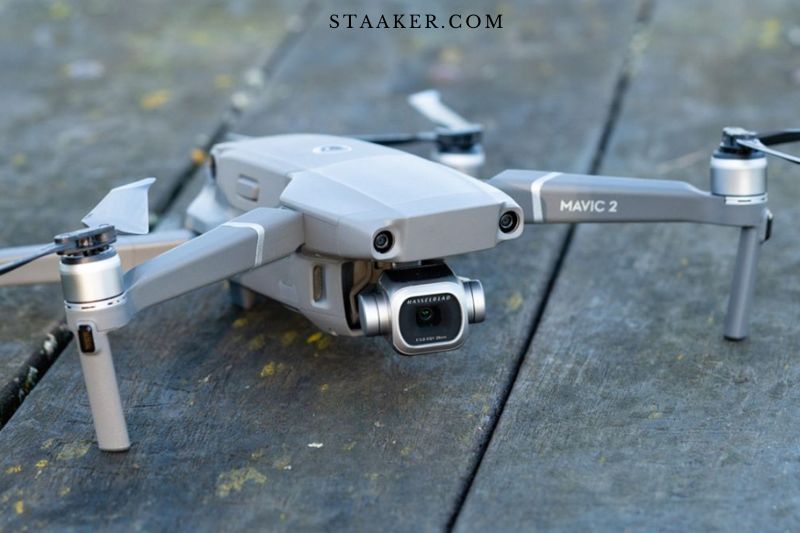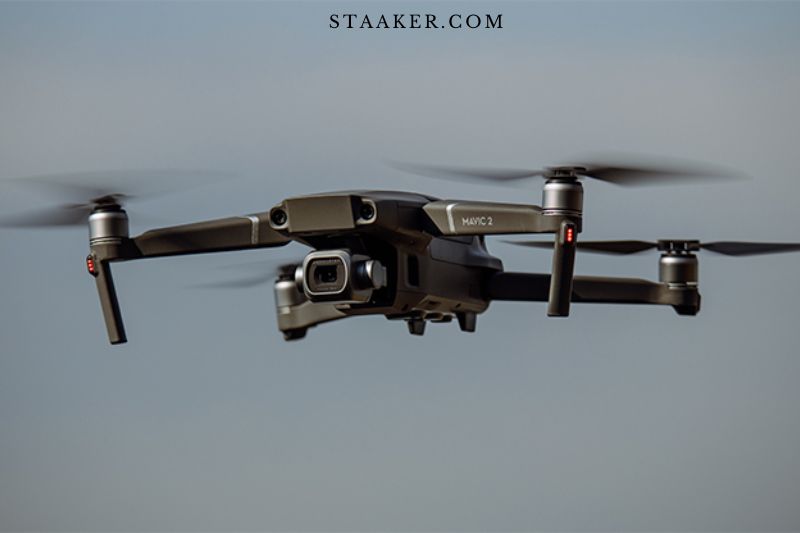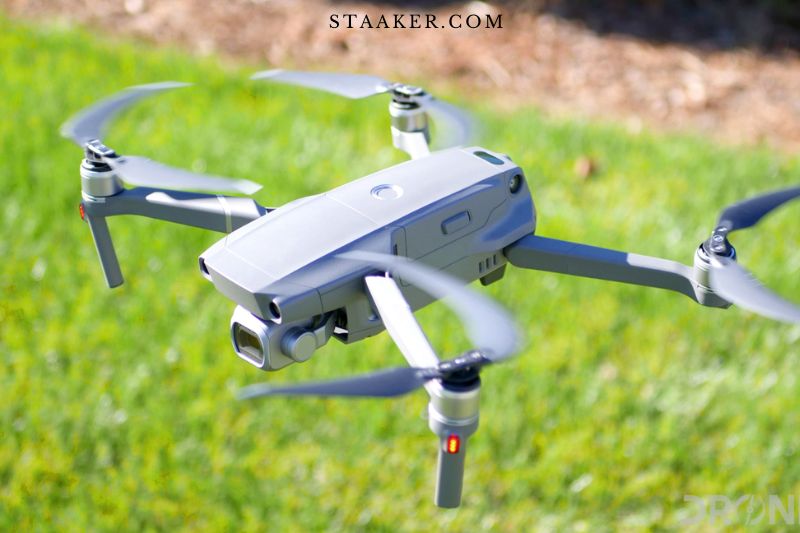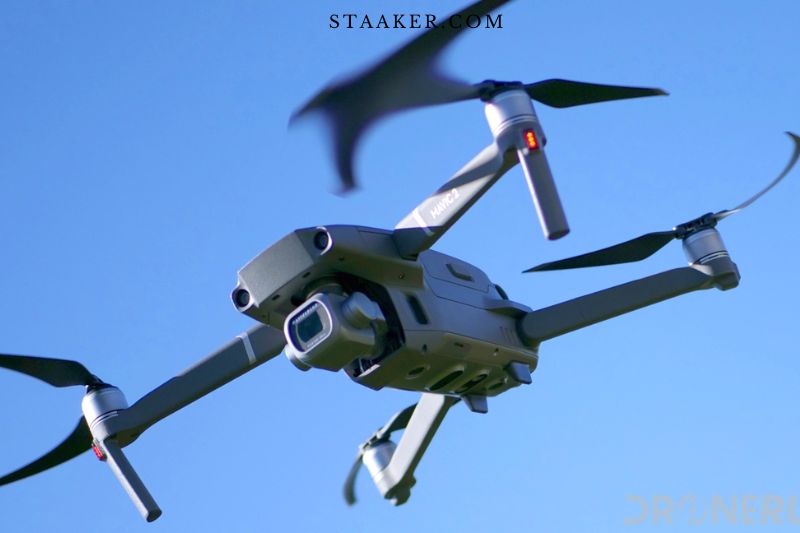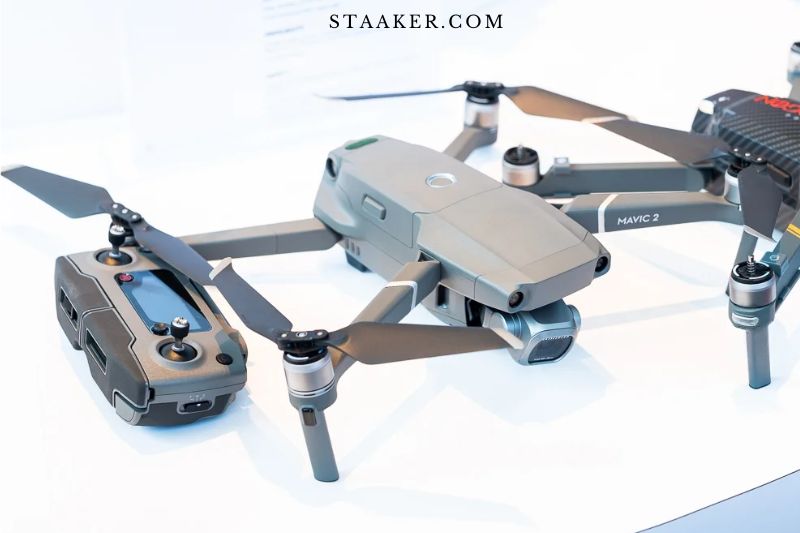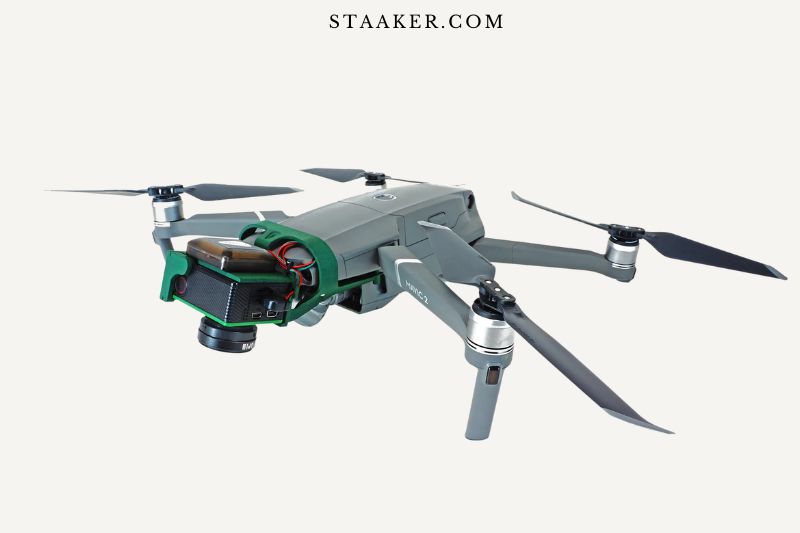When it comes to drones, there are a lot of options on the market. But if you’re looking for a drone that is sure to impress, then the DJI Mavic 2 Pro is the one for you.
This drone is packed with features and is perfect for amateur and professional photographers and videographers.
Read on for our DJI Mavic 2 Pro review.
DJI Mavic 2 Pro Reviews
Pros
- Video in Superlative 4K.
- 20MP Raw and JPG Still Imaging
- Excellent battery life.
- Compact, foldable design.
- Obstacle avoidance sensors.
Cons
- 8GB of internal memory is not much.
- There is no support for DCI formats.
- Expensive.
DJI Mavic 2 Pro Specs
- Dimensions: 3.3 by 3.6 inches by 8.4 inches
- Weight 2 lb
- Rotors 4
DJI’s Mavic drone family has almost replaced the Phantom series. The Mavic drones are smaller and more compact than the Phantom series. They can also be folded for easy storage and transportation.
Mavic 2 Pro is the top-end model. It has the largest image sensor in a drone of this size. This means that video and images look better than any other drone, even the Pro’s close sibling, Mavic 2 Zoom.
Although the Pro costs about $250 more, we believe the difference in image quality and video quality is worth it. Our Editor’s Choice is the Mavic 2 Pro, which we consider the best drone for hobby pilots.
The Best DJI Mavic Folding Drone
Mavic 2 Pro is slightly larger than the original Mavic Pro. The drone measures 3.3×3.6×8.4 inches (HWD) when folded and 3.3×9.5×12.7 inches when its arms are extended. It is easy to fold the drone. Just remember to lift the front arms before the bottom.
The drone weighs 2 pounds and is heavy enough to require FAA registration for recreational flying in the USA.
The Mavic 2 Pro is lighter than the Mavic Air and smaller than the Mavic Air. However, it’s still very portable. The Mavic 2 Pro fits in a standard 70-200mm F/2.8 zoom lens bag. Although you will need to leave some space for the charger, remote control and extra batteries, you don’t have the same problem with the Phantom.
DJI has split the Mavic 2 line into two models: the Pro, which we are reviewing here, and the Zoom. The Zoom features a 2x optical zoom lens but a smaller, 1/2.3-inch 12MP image sensor.
With a 1-inch sensor, the Mavic 2 Pro is four times larger than the Mavic 2 Zoom’s imager. The Pro jumps ahead. This sensor has a larger surface area, which allows for higher image resolution (20MP) and better-quality video.
Design and Controller
The foldable design of the Mavic 2 Pro is maintained. The drone’s footprint can be almost doubled for transport, making it one of the most portable drones with a 1-inch sensor. The front arms need to be rotated, and the rear arms need to be bent up. Each arm houses one of the four propellers.
The Mavic 2 Pro’s main body is rectangular and compact, while the camera and gimbal are mounted at the bottom or front of the drone. When the drone is positioned on the ground, the camera and gimbal have a raised position that allows for more clearance to take off and land.
It’s not possible to have a lot of space, so it’s a good idea to use a landing pad to protect the lens from water when landing on wet grass.
Press and hold the button at the top to turn the Mavic 2 Pro off. It clips into place at the drone’s top. To turn on the controller, press and hold the power button briefly.
Then press and hold the power button again. Don’t forget your smartphone to the DJI Go 4 App, which gives you access to camera view, camera control, and drone settings.
The controller is compact and foldable. Joysticks are stored at the bottom of the controller and must be secured before use. Although the controller is similar to a radio controller, it can be used for many different maneuvers than an RC car. It’s worthwhile to familiarize yourself with them before you take off.
The controller’s bottom opens to allow a phone holder to fit even the largest smartphones. The DJI Go 4 app automatically opens when the controller turns on. This makes it easy to get everything started.
The app can access many camera controls, but there are 11 controls that you can use directly. You can customize many of these, like the function buttons on a DSLR or mirrorless camera. This allows you to configure your controller to suit you and your photography.
DJI Go 4 offers a similar layout to compact cameras and has the same camera functionality. This app will make most photographers feel right at home.
Features and Flight
It’s easy to fly the DJI Mavic 2 Pro. GPS keeps the drone in place and prevents it from being blown off by the wind. This system also includes safety features such as collision avoidance that uses omnidirectional obstacle sensing to help you avoid crashes.
These features are unique but don’t stop the drone from hitting objects.
The drone will stop if it sees you getting too close to any object. But, accidents can happen, and this is not always the case.
The Mavic 2 Pro’s flight time is 31 minutes. This is much longer than the real thing, which is 20-25 minutes. It can fly at a maximum speed up to 45mph/72kph, so losing control of it or crashing could have serious consequences.
The safety aspect of the Mavic 2 Pro is not the only thing that matters. There are many shooting modes and automated “Intelligent Flight” modes. These modes aim to make it as simple as possible to get specific stills or videos.
It’s best to approach all techniques manually, taking complete control over the drone’s flight. However, these automated modes are great options for beginners who want to learn their craft.
Timelapse (and hyperlapse), Quickshot and Active Track are available. Point of interest, Waypoint, TapFly, Cinematic, and Waypoint are also available.
There are many options for stills photography, including Single Shot, Burst Mode (and hyperlapse), HDR, AEB and HyperLight (night mode), Interval, Pano and Pano.
You can access the three main flying modes of the Mavic 2 Pro from the app or by using the switch on the controller’s side. Tripod Mode (T), which slows down the drone and makes it more responsive, allows for smoother video.
The standard flight mode is Positioning Mode (P), which provides medium control and allows for a good level of maneuverability. Sports Mode (S) makes the Mavic more responsive and flies much faster.
DJI Go 4 App and Features
The DJI Mavic 2 Pro is compatible with the DJI Go 4 App, which can be downloaded for free on iOS and Android. It does many things, but most importantly, it allows you to control the drone’s camera. The app also shows the drone’s point of view in 1080p resolution.
The best drone app also displays a globe map embedded in the video feed. This can be swapped to determine the Mavic’s relative position.
You can also access automated shots or enter into unique capture modes like Hyperlapse, a time-lapse and motion mode that allows you to capture faster-paced world views. The way DJI implemented it is not my favorite.
The drone makes a clicking sound in each frame the drone adds, and the flight speed is significantly slowed. You may have different preferences, but I prefer a smooth view from my camera without any audible distractions.
Many other flight options and modes can be automated, in addition to Hyperlapse. Asteroid combines panoramic imaging and video, transforming a standard view into a Little Planet projection.
This was first demonstrated with the Mavic Air. TapFly allows you to fly the drone using your phone’s screen. ActiveTrack and APAS are also supported. Advanced Pilot Awareness System, which is useful when flying around obstacles, can be enabled. Although it slows down the drone, it can be enabled to fly around any obstacles automatically.
There are also safety features in the app. The app works with the drone’s GPS to enforce no-fly zones. This includes the permanent one around the White House and temporary bans on drones in areas where aerial firefighting occurs.
These features can help you stay safe. You can also use the app to authorize flights near airports if you have an FAA Part 107 Commercial License. This saves you the hassle of contacting the control tower. The app allows you to perform firmware updates often required for DJI products.
Superlative Videos and Images
The DJI Mavic 2 Pro captures the most stunning drone footage and images in a small package. You can improve it by upgrading to a larger, more expensive aircraft equipped with an SLR-sized sensor, changeable lenses, and the DJI Inspire 2.
Its 4K footage is sharper than other drones. This is due to its sensor size. The sensor size of most drones is 1/2.3 inches, similar to the one you get on a smartphone. The Mavic 2 Pro has a 1-inch imager. This is four times larger than you get with the Mavic 2 Zoom or Mavic Air.
This is not the first DJI drone to use the sensor size. It’s also available on the Phantom 4 Pro and Phantom 4 Advanced models.
Both offer some benefits, including support for 4K DCI. But if you’re okay with UHD, you’ll find the Mavic to include many of DJI’s more recent innovations–including more robust automated shots and APAS–which are not available in the Phantom series.
You get 4K UHD footage at 100Mbps with H.264 or H.265 compression. Ready-to-edit footage can be shot with a standard profile color. DJI used color science technology from Hasselblad to create the Mavic 2 Pro’s color profile. All of our test footage was shot using the default profile.
If you prefer a more artistic and filtered look to your video, you can choose to use a baked-in profile or the flat, low-contrast Dlog-M profile.
Flat shooting gives you more control over color corrections, as Dlog-M is a 10-bit file. Dlog-M is not recommended for video professionals. You will need the software and the skills necessary to make Dlog M footage stand out. You can also use the Hybrid Log Gamma profile to support HDR video.
There are many frame rates. You can get 24fps for 4K, 25fps, and 30fps for 5K. You can drop the resolution to 2.7K for 48, 50, or 60fps. This is available at 1080p (2K), plus 120fps.
You can adjust the aperture from f/2.8 to f/11 and choose ISO 100 to 6400 for video. I recommend adding a neutral density filter to the lens for flights in bright sunlight. However, if you don’t have one, you can stop the lens further to preserve the proper shutter angles.
You have two options for viewing the 4K video. DJI does not do an excellent job of identifying them in their app. This is a shame as it gives the Mavic 2’s 4K camera the same coverage range as the Mavic 2 Zoom.
FOV is the default setting. It gives a wide-angle view of the world. This is approximately 28mm in full-frame terms. The camera angle narrows a little when you switch to the HQ setting (High Quality).
It’s closer than 40mm. Although you don’t have the same range as the Mavic 2 Zoom’s zoom (24-48mm), it is close enough. Although you lose the ability for a dolly zoom shot, it seems like a reasonable price to pay to get a better video overall.
Imaging can also be used in a variety of ways. The 1-inch sensor size has been found a home in compact cameras. It delivers better results than what you can get from your smartphone. Mavic 2 Pro can shoot images in JPG and Raw DNG formats.
Most serious photographers will use the latter. Low-light aerial photography is more accessible with a large sensor. The ISO can be set up to 12800 for images. Although I recommend ISO 3200 for this sensor, it will still produce stunning twilight images.
The Best Small Drone
Is the DJI Mavic 2 Pro a better folding drone? I don’t believe so. Although it is small enough to carry your video and terrestrial imaging equipment around in a backpack with you, it does not require any sacrifices over larger drones.
If you don’t need to capture footage for projection in a cinema hall, the 4K UHD format (the one that your TV uses) will suffice for any project intended to be viewed in your living room.
The drone is easy to love, thanks to its video quality, the ability to capture footage from two angles, great still imaging, and the excellent stabilization of the Mavic 2’s gimbal stability. Although expensive, the Mavic 2 Pro folding drone is our favorite.
Verdict: DJI Mavic 2 Pro Drone Quadcopter
The Mavic 2 Pro is still an excellent choice for videographers and photographers who want a lightweight drone that can be carried around with other equipment.
The Air 2S is more compact and affordable than the Mavic 2 Pro. This means it has been ranked number one in our list of the best drones. The Mavic 2 Pro is still the best small folding drone, with variable aperture, and has very few competitors.
There are still alternatives, such as the Mavic 2 Zoom, which features an optical zoom lens. It also features an optical zoom lens but has a smaller sensor that does not allow for aperture control.
The Mavic Pro 2’s nearest competitor is the DJI Phantom 4 Pro V2.0 in sensor size. However, it’s a larger, more powerful drone aimed at professionals, making it a new proposition.
The Mavic 2 Pro is straightforward to fly. It also features some of the best flight and camera technology available on the market for consumer drones.
Although it isn’t as portable as the DJI Air 2S, and the image quality isn’t as good as the DJI Inspire 2’s Micro Four Thirds camera (DJI Inspire 2), the Mavic 2 Pro is still a great option if you require an adjustable aperture.
FAQs
1. What is the size of the sensor on the Mavic 2 Pro
The Mavic 2 Pro’s CMOS sensor is 1-inch and can shoot at 20MP with a 4K video recording. It has a 28mm focal length and a 77-degree field of view. The aperture can be adjusted from f/2.8 to f/11.
2. What is the weight of The DJI Mavic 2 Pro drone battery?
- Intelligent Flight Battery
- Capacity: 3830 mAh
- Type of Battery: LiPo 3S
- Energy: 43.6 Wh
- Net Weight: Approximately.0.5 lbs (240 g).
- Charging Temperature Range: 41deg – 104deg F ( 5deg – 40deg C).
3. How do I operate DJI Mavic Pro 2?
- How to activate the DJI Mavic 2 Drone first time
- Start-up and fully-charge battery. …
- Connect the phone to the internet …
- Connect your phone to the remote controller …
- Turn on the remote controller. …
- Turn on DJI Mavic 2 …
- Open DJI GO 4 App And Press Next. …
- Name Your Aircraft. …
- Set up Joystick Mode.
4. Where To Buy DJI Mavic 2 Pro?
The DJI Mavic 2 Pro is available for purchase from the DJI Store, Amazon, B&H Photo, and other retailers.


